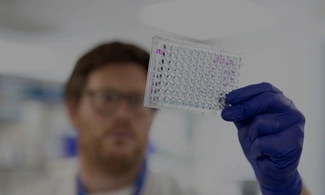What’s in tobacco smoke?
Tobacco smoke contains over 5,000 chemicals, including nicotine. People who smoke do so because they are addicted to nicotine, but the harm comes from the tar, carbon monoxide, and other chemicals in the smoke.
Many of the chemicals can cause cancer. Others are poisonous. When you smoke, these chemicals damage your lungs and can pass into your blood and spread through your body. Smoking can affect every part of the body, from your skin to your brain.
Why should I stop smoking?
Stopping smoking is one of the best things you can do for your health. If you smoke and have a lung condition, one of the best treatments for your lungs is to stop smoking. You’ll feel less short of breath and cough less.
If you stop smoking, you’re likely to live longer, feel better, and have more money. You’ll also protect people around you from having to breathe in your smoke. Passive smoking is harmful, especially for children and young people. Other reasons to stop smoking:
- If you have asthma and smoke, you will need higher doses of steroid preventer medicine to treat the inflammation in your airways.
- If you already have a lung condition, stopping smoking is the best step you can take for your health and quality of life. It will help you cope with your symptoms and stop your condition getting worse.
- Your friends and family will be healthier. People who breathe in second-hand smoke are at risk of the same diseases as people who smoke. Second-hand smoke is particularly dangerous to babies and children as their lungs are still developing.
- Smoking puts your lungs at risk - people who smoke are five times more likely to catch flu and twice as likely to get pneumonia.
- It’s never too late to stop, no matter how long you have smoked for. Your lungs will work better, even if you stop when you’re over 60. If you stop smoking when you’re 30, you’re likely to live 10 years longer.
- Stopping will protect your children’s health in the long term. Children are more likely to take up smoking if their parents smoke.
- You’ll save money. The average person who smokes can save around £38 a week by quitting smoking. Use the NHS inform calculator to work out how much money you could save if you quit smoking today.
- As well as being bad for your health, smoking is also bad for the environment. Smoking and the tobacco industry are linked with deforestation, corruption, child labour, and other human rights abuses.
What does smoking do to your lungs?
Smoking and breathing in second-hand smoke (passive smoking) causes many lung conditions, including:
- chronic obstructive pulmonary disease (COPD)
- obstructive sleep apnoea (OSA)
- pneumonia
- lung cancer.
The NHS says 35% of all deaths for respiratory conditions are linked to smoking. If you smoke and have a lung condition, the most effective treatment is to stop smoking. Read more about how you can quit.
People who smoke are at higher risk of getting chest infections, including flu, pneumonia, and COVID-19. If you smoke and get an infection, you’re more likely to have severe symptoms.
Smoking doesn’t just affect your lungs. It also causes:
- heart attacks
- strokes
- other cancers
- skin aging
- erectile dysfunction
- infertility.
On average, people who smoke live 10 years less than non-smokers. Smoking tobacco is the leading cause of preventable deaths in the UK.
Why can quitting smoking be hard?
The tobacco industry has designed cigarettes to be as addictive as possible. Their advertising is also marketed at young people.
The nicotine in tobacco gets into your brain and creates a need to continue to smoke. When you stop smoking, the falling level of nicotine in your brain creates the urge to smoke. Controlling these urges is the best way to quit.
Smoking is often part of your daily routine and becomes a habit. Your local stop smoking service can support you to manage this side of smoking, as well as helping with physical cravings.
Are all types of smoking bad?
There’s no safe way to smoke tobacco. Tobacco comes in different forms, which are all harmful and addictive:
- Low tar, light or menthol cigarettes are not safer than other cigarettes. Many of these types of cigarettes are banned in the UK, but are still available abroad. You get similar amounts of tar and other chemicals from these cigarettes.
- Roll-ups are just as dangerous as factory-made cigarettes. Filters do not make smoking any safer and are a type of plastic pollution
- Cigars or pipes are not a safe alternative to cigarettes. Cigar smoke contains more chemicals than other cigarettes.
- Shisha smoking often contains tobacco, but it’s the burnt charcoal that increases the harm. The smoke goes through water but still contains the same dangerous chemicals and is just as harmful as other cigarette smoke.
Cannabis smoking
Breathing in any type of smoke is harmful. This includes cannabis, also known as marijuana, weed, pot, dope, or grass. Cannabis smoking is linked with getting COPD and can make asthma symptoms worse.
You can become addicted to cannabis, and just like tobacco, cannabis smoke has cancer-causing chemicals. If you mix cannabis with tobacco and smoke it, you’re at risk of becoming addicted to nicotine too.
Cannabis is also linked with an increased risk of getting schizophrenia.
Shisha
Shisha, also called hookah, narghile, waterpipe, or hubble bubble, is a form of smoking tobacco. It’s addictive and harmful for your health. Smoking shisha can at least double your risk of getting lung cancer and could also increase your risk of other cancer types, such as mouth or stomach cancers.
Smoking shisha is a risk for people with asthma and can increase the chance of asthma attacks.
Smokeless tobacco
Smokeless tobacco is tobacco that isn’t burned. It’s often chewed, sucked, or breathed in. There are different types of smokeless tobacco. The products are often known by their south Asian names, such as betel quid, paan, or gutkha.
Smokeless tobacco is addictive and harmful for your health. It’s linked with mouth cancer, cardiovascular disease, and problems in pregnancy. As well as tobacco, it can also include other harmful ingredients such as slaked lime, betel nut or areca nut, which are known to cause cancer too.
Examples of smokeless tobacco are:
- tobacco with or without flavourings, such as mishri India powdered tobacco and qimam, also known as kimam
- tobacco with slaked lime or lime paste and areca nut, such as paan, gutkha, zarda, mawa, manipuri and betel quid with tobacco
- tobacco with other ingredients added, such as kahini, gul, and naswar, also called niswar or nass.

Get support
Call or email our helpline for support with your asthma. Get advice on medicines, symptoms or travelling with a lung condition. You can also find support through our groups.








